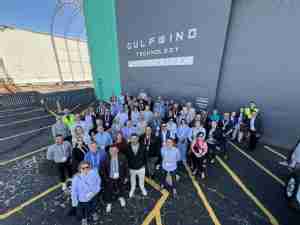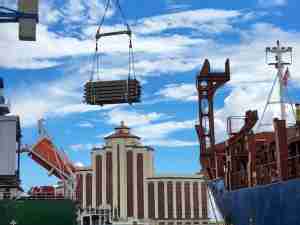“The Ports of Indiana enjoyed one of best years on record in 2010,” said Rich Cooper, CEO of the Ports of Indiana. “Despite recent economic troubles, this is the third consecutive year that overall shipments have increased, and this was our second largest total in 12 years. What’s even more exciting is that many of last year’s developments were designed to seed future growth. A very high standard has been set for 2011 and we have to capitalize on the momentum we’ve built.”
In 2010, there were significant increases in shipments of grain, fertilizer and steel, but the biggest impact came from the arrival of new cargoes: ethanol, dried-distillers grain (DDGs) and “heavy lift” cargoes, which included building-size storage tanks, transformers and ship engines as well as a windmill project that required 11 shiploads of components. Worldwide demand for local grain drove up agricultural shipments for both outbound grain (13 percent) and inbound fertilizer (22 percent), while steel shipments gained momentum from a recovering U.S. manufacturing sector to increase 12 percent compared to 2009.
The Port of Indiana-Burns Harbor shipped 14-times more heavy lift cargo in 2010 than the previous year, which resulted in a 43-percent increase in overall shipments and a total tonnage of 1.8 million. On the Ohio River, the Port of Indiana-Jeffersonville handled 1.7 million tons of cargo, an increase of 27 percent over the previous year and the fourth largest annual total in port history. The Port of Indiana-Mount Vernon recorded its second highest cargo volume since 1996, with more than 4.2 million tons in 2010.
Mount Vernon tonnage got a late boost from the opening of the largest facility ever built at Indiana’s three ports as Aventine Renewable Energy completed construction on a 110-million gallon ethanol plant in December. The 112-acre facility is expected to process 40 million bushels of corn from local farmers in 2011, nearly three-times the port’s corn volume in previous years. With the recent opening of two area ethanol plants – Aventine and nearby Abengoa Bioenergy – Consolidated Grain and Barge expanded its port operations by opening a unique rail-to-barge terminal that began transloading ethanol and dried distillers grain midway through 2010. To keep up with this growth, the port expanded its own boundary with the purchase of 110 acres on its eastern border, bringing the total size of the port to 965 acres with 300 acres available for future development.
In Jeffersonville, four port companies made significant expansions to facilities during 2010. Consolidated Grain and Barge upgraded a barge-loading conveyor, Idemitsu Lubricants America Corp. added petroleum storage, Steel Dynamics began constructing a new distribution facility, and Voss/Clark Industries started working on additional space for new processing equipment.
“Our primary goal is to create a sustainable competitive advantage for our port companies and the state of Indiana,” Cooper said. “It’s very gratifying to see so many of our customers choosing to expand their operations at our ports. These companies are our long-term partners and we want to do everything possible to help them grow their businesses for many years to come.”
In 2010, the Ports of Indiana expanded a new foreign-trade zone (FTZ) program to more than 20 counties surrounding the ports. FTZs are special distinctions granted by the U.S. Department of Commerce to help U.S. companies compete in global markets by









